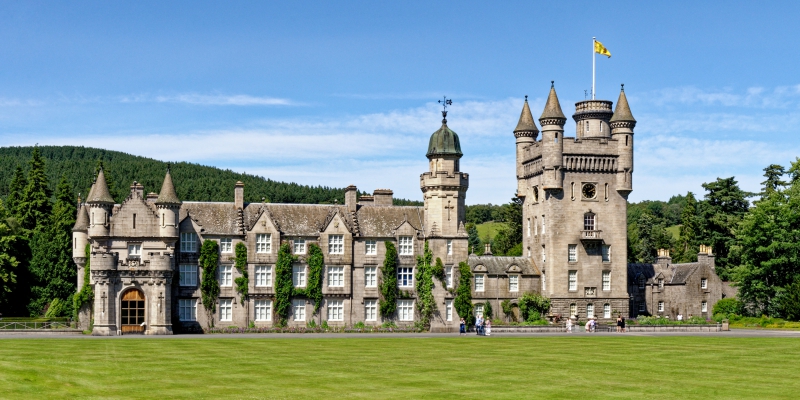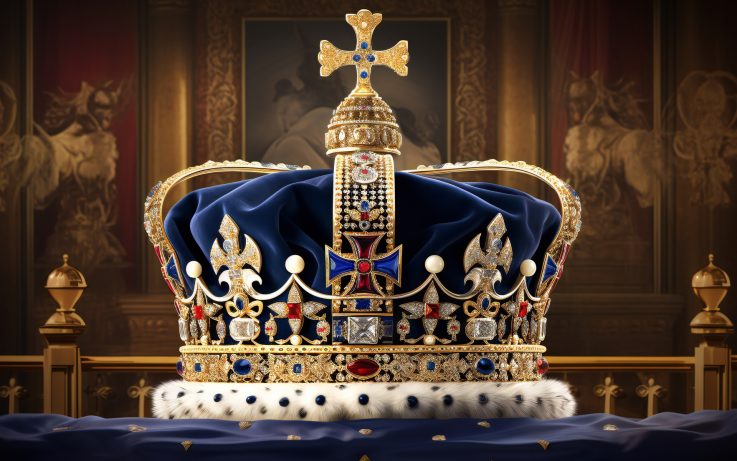10 facts about the British royal family

The British monarchy is one of the oldest and most famous in the world. Of course, there are royal houses in Spain, Sweden and many other countries. But when we talk about modern monarchy, it is England that often comes to mind.
The history of the British royal family is so vast that more than one textbook could be devoted to it, but today we will focus only on our contemporaries and their biographies. Here are 10 facts about the world’s most famous royal family.
1. Succession
Perhaps we would never have known about Elizabeth II, because the story could have unfolded very differently. Her uncle Edward would have ascended to the throne, and then he would have had heirs who would have pushed Elizabeth aside. And today we would have a very different monarchy.
But suddenly King Edward VIII abdicated immediately after his coronation, for an important reason — love. His lady of his heart was the actress Wallis Simpson. The British would never have accepted her as queen. Not only was she twice divorced, which in itself was outrageous, but she was also an American, which did not fit with the conservative views of the British.
Technically, Edward VIII did not have to give up the throne because of this. The formal rules of the royal family of Great Britain don’t require it. But, firstly, he did not want his beloved to face a huge amount of self-hatred. Secondly, he realised that rejection of such a queen would greatly reduce his popularity, split the country and nothing good would come out of it. So he voluntarily resigned and left with his wife for France. His younger brother and Elizabeth’s father George VI became king.
Looking ahead, we can say that Elizabeth II would still be on the throne, even if her uncle had not abdicated. It would have just happened 20 years later — not in 1952, but in 1972. As further history showed, Edward never had any children of his own. So Georg was next in line anyway. But since he died before his brother, the heiresses were his daughters, one way or another.
2. Historical fact
Edward was to some extent a supporter of Nazi Germany. His brother George, on the other hand, was an anti-fascist.
3. Elizabeth II and the Second World War
Elizabeth was born on 21 April 1926. At birth, she bore the title of Princess of York. Despite the fact that she was not considered a real heiress at that time, she was a member of the royal family of Great Britain, and therefore, received a good education. Of course, it was at home, but she was taught by the best teachers. For example, she was taught constitutional law by Sir Henry Martin, Rector of Eton College.
During the Second World War, the entire royal family remained in London, although for safety’s sake they were offered to go to Canada. However, they considered this unpatriotic and wrong, and therefore refused. Usually in such cases, the female half of the aristocracy helps in hospitals. But Elizabeth went her own way and joined the self-defence unit, where she served as a mechanic-driver of an ambulance.
4. Marriage for love
In royal families, marriages are often arranged out of favour and to cement the alliance between countries. But this was not the case with Elizabeth.
She met her chosen one, Prince Philip, when she was still a child. But their feelings began during the war, during which they exchanged letters. In the end, their parents blessed their marriage. In 1947, Elizabeth got married. The wedding was very beautiful. For a devastated England, it became a symbol that youth, love, happiness, the future, always triumphs, which means that life will soon get better again.
5. Board Record
In 1952, after the death of her father, Elizabeth II became Queen of the United Kingdom. Her reign came at a time of great change – Britain was no longer an empire. India had withdrawn from the protectorate under George VI. And then came the massive decolonisation that ended with the creation of the Commonwealth of Nations. And the dignity with which the Queen held herself helped the British to survive this difficult period.
The Queen died on 8 September 2022. She became Britain’s longest reigning monarch. Her reign lasted 70 years and 214 days.
6. The Queen’s reliable support
Elizabeth II’s husband was also an interesting figure — equal to her in both birth and greatness of personality. From birth, he held the title of Prince — Greek and Danish. Almost immediately after his birth, the Greek royal family was forced to leave the country due to the overthrow of the monarchy. Philip was raised and educated in Europe. He chose a naval career and served in the Navy during World War II, going through more than one battle.
He later had to give up the title of prince in order to join the royal family of Great Britain. He continued to be called a prince, though, because any husband of the queen would have that status. He cannot be called a king, because the king is always above the queen, so he can only be the heir by blood. Philip also received the title of Duke of Edinburgh from George VI, which he held until his death.
As the Queen’s consort, Philip was active in public life and represented the country at international receptions. He never overshadowed his wife, but was a reliable support for her. He died in 2021, two months short of his 100th birthday.
7. The “eternal” prince
Charles, Prince of Wales (born 1948) is the eldest son of Elizabeth II and the longest-serving heir to the throne in the history of the British royal family. When asked if he was tired of being a perpetual prince, he invariably replied: «I have to lose my mother to be king, so I would like to stay a prince for as long as possible».
On 8 September 2022, following the death of Elizabeth II, Prince Charles (Charles III) became King of the United Kingdom. The official coronation took place on 6 May 2023.
8. Charles III and painting
The eldest son of Elizabeth II was born on 14 November 1948. He graduated from Cambridge University with a Master of Arts degree. This subsequently influenced his choice of activity — the support and development of architecture and painting. He wrote several textbooks on these areas, was a patron of many specialised organisations and founded his own foundation. It is also known that painting has always been one of his favourite hobbies.

9. «Queen of people’s hearts»
In 1981, Prince Charles (future King Charles III) married Diana Spencer. She was an aristocrat by birth — a representative of the Earl Spencer family. Diana would give her husband two sons (William and Harry), but this would not save the couple from divorce.
Although Lady Diana was not a member of the British royal family for very long, she left a colourful mark on British history. Unofficially, she held the title of «Queen of people’s hearts» and was very popular. Such a status she earned by her kindness and openness to people. For example, Diana played an important role in making HIV diagnosis no longer a stigma of leprosy — she not only met but also hugged patients with the disease to show that it is not transmitted through touch.
10. «Waity Katie»
Kate Middleton is the chosen one of Charles III’s eldest son, Prince William. She comes from a wealthy but not noble family. Her parents run their own business, but at the same time neither titles nor noble past they do not have. However, the girl became the first in the history of the British royal family to be chosen by the future monarch, who has a higher education and work experience outside the palace.
The couple met at university. Their romance lasted about ten years, until they ended up getting married. During this time, Catherine showed a strong character, withstanding the constant pursuit of paparazzi, and not always exemplary behaviour of William himself, and ridicule about her prolonged status as an unofficial friend — she was even nicknamed «Waity Katie».
In 2011, William and Catherine got married. After the wedding, she became the Duchess of Cambridge, and more recently has been officially named Princess of Wales.
Like her mother-in-law, Catherine spends a lot of time meeting ordinary people and always behaves in an open, caring and attentive manner. Her public work, which is mainly aimed at supporting motherhood and childhood, is also respected. Her popularity among ordinary Britons is not inferior to the popularity of Lady Diana, with whom many people associate this title, so the transition turned out to be quite organic and natural.
Popular questions on the topic of the British royal family
When and how did Princess Diana die?
Princess Diana died on 31 August 1997 in a car crash in Paris. She was only 36 years old.
Who would inherit the throne after Charles III?
According to the rules of succession, the crown passes to the eldest child of the monarch (gender does not matter). Therefore, the successor is Charles III’s eldest — Prince William of Wales.
How many children does the heir to the throne have?
William and Catherine are the parents of three children:
- Prince George (born in 2013) is the future king of the UK after his father (barring any excesses);
- Princess Charlotte (born 2015) is the first girl in the British royal family to be born after the decree on gender equality in succession to the throne;
- Prince Louis (born 2018) is the youngest son and a favourite of the British public.





